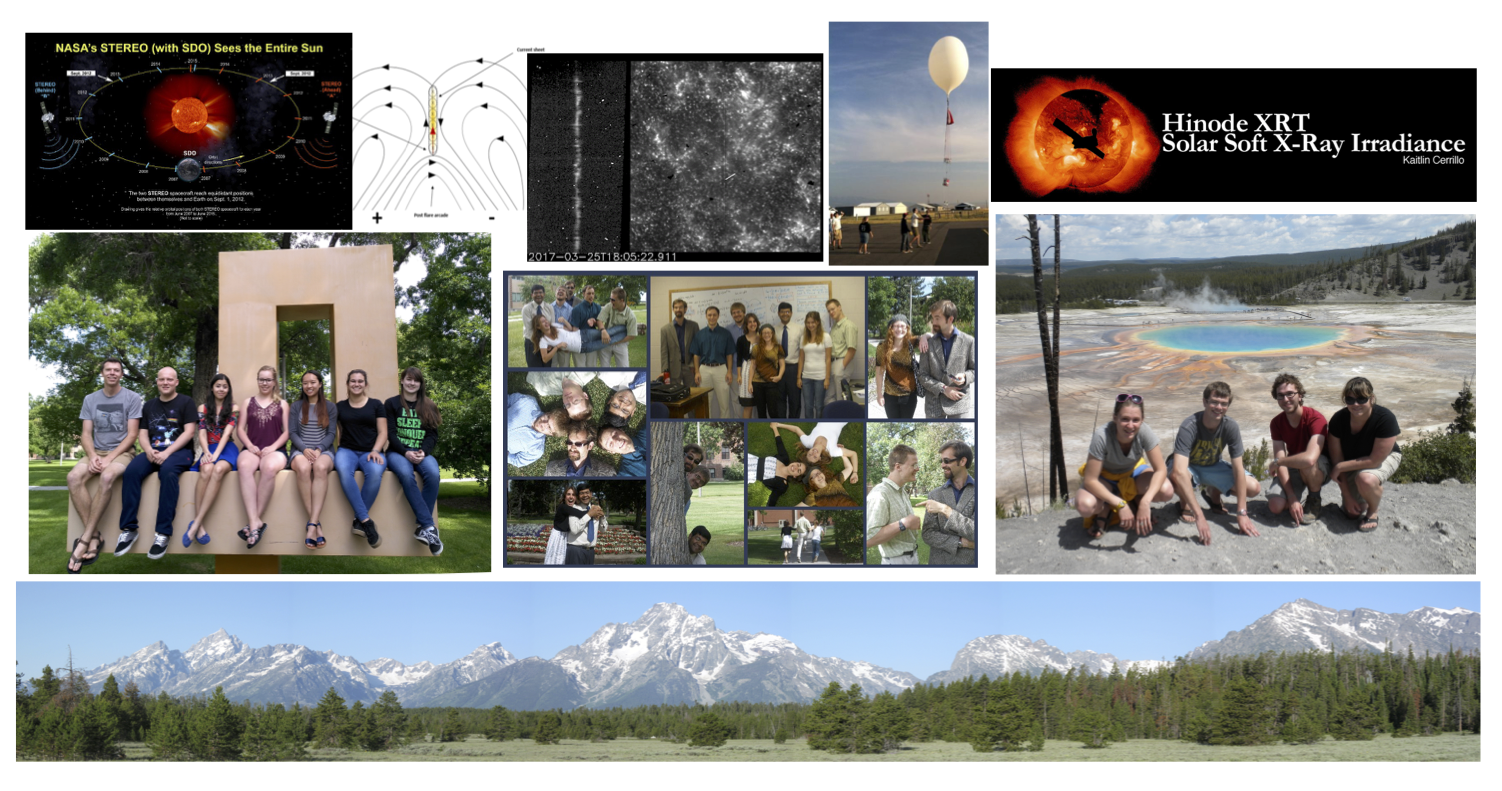What do former REU students say about the program?
"I would highly recommend the Solar Physics REU program. The program
gives you a real insight into what research is really like ... " more
Apply now for Summer 2025!
Objectives
- Provide high-quality state-of-the-art research experience.
- Develop independence, creativity, and interest in physics and astronomy graduate study.
- Demonstrate how academic knowledge acquired in classes relates to real-world research problems.
- Develop and strengthen practical research skills.
- Encourage participation by under-represented students in STEM research and career.
Research
Most projects involve analysis of data from current space missions such as
Parker Solar Probe, Solar Dynamics Observatory ,
Hinode, STEREO ,
and IRIS , past space missions including
Yohkoh, SOHO, TRACE,
and RHESSI, and ground-based observatories like DKIST. Experience has shown that data analysis projects are
suitable for most undergraduates at the sophomore or junior level.
Additionally, each year there are a few opportunities in
solar magneto-hydrodynamics, and space hardware development.
Recently, the REU program has expanded to also include astrophysical topics such as gravitational waves and black holes.
List of 2024 projects
Venue
The summer months in Montana offer outstanding opportunities for outdoor recreation and other activities associated with the university and the community.
Surrounded by spectacular mountains and rivers, Bozeman is within easy driving distance of Yellowstone and Glacier National Parks.
Benefits
Our program gives participants an opportunity to develop skills for contemporary research under the guidance of internationally known physicists. These REU experiences help students make informed decisions about graduate school and careers in academia, research, and STEM fields.
Training and Education
The first week of our program includes training in the unix/linux/Solaris computing environment and programming languages as tools for
numerical modeling and data analysis. Lectures by MSU faculty and visiting professors cover a variety of subjects related to the research program.
Participants are also trained in public speaking and communications. The last week of our program includes participant presentations of research results.
Successful projects lead to presentations at conferences and
publications in journals. For a more detailed look at the program,
see the calendars for 2024.
Participants must be full-time undergraduates, typically finishing their sophomore or junior years, and will not graduate before
2025 summer. Applications from underrepresented groups are particularly welcomed. Application is restricted to US citizens or permanent residents.
The summer 2025 program will run from May 27 through August 1. Time-critical first and last week activities and
summer housing limitations preclude other start and end dates. Stipends will be $6000 plus a $800 food allowance
for the ten week program. Domestic travel costs to and from Bozeman (up to economy-class air fare) from home or campus
are covered and university residence hall lodging (single room dorm) is provided.



